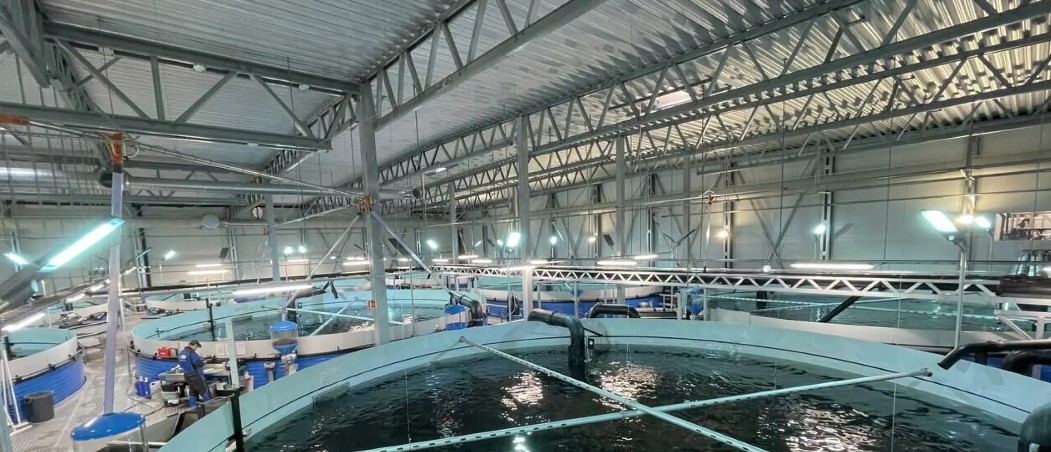
Providing not only operational benefits, it is driving a transformation in the salmon industry, with a focus on more efficient, controlled and environmentally friendly production.
The cultivation of post-smolts in salmon farming is emerging as a key trend in salmon production worldwide, particularly in producing countries, such as Norway and Chile.
Among the advantages of post-smolt cultivation, the reduction in the use of antibiotics and antiparasitics stands out, due to less exposure to pathologies, and adverse environmental conditions such as algae blooms or low oxygen. In addition, this approach minimizes the environmental impact, since the fish spend less time in the ocean and the load on farming centers is reduced.
In Norway, there are already companies that are making progress in this area. Some have already transferred post-smolts to their marine centers, realizing that this strategy does work and that the fish need fewer treatments against sea lice.
This was confirmed by Siri Tømmerås, commercial director of Land Based at Akva Group, who recently gave a presentation on the trends that are developing in Norway, around the production of post – smolt, emphasizing that “one in three salmon producers Norwegian company plans to start producing larger smolts, and two out of three that already produce larger smolts plan to increase their production.
In 2023, 62.7 million dead farmed salmon were recorded in Norway. In Tømmerås’ opinion, change is urgent in this area since how to reduce mortality has been discussed for years. And, on the other hand, it has also been discussed how to reduce sea lion attacks on farming centers.
“We have a solution or a more concrete tool to reduce mortality, but also to reduce sea lion attacks. And that is to keep the smolt on land for longer,” the expert said.
“We see a clear trend that, if the fish is kept on land longer and transferred to the sea later, when it is larger, there is a clear trend of reduced mortality, even when production takes place mainly in areas where We have a mortality of between 22% and 25%m highlighted Siri Tømmerås.
Post – smolt in Chile
Taking into account the development of new land-based initiatives in Chile that aim at post-smolt production, Siri suggests that one of the problems is Chilean regulation.
“This needs to be clearer. Regulation and authorities need to give some incentive to producers. Let them understand that there is value in keeping fish on land for longer. And producers, for their part, need to be sure that their Investment will create value, which would support obtaining licenses to farm. We have seen that it has been difficult for many salmon producers to invest in larger facilities on land, because the regulation is very demanding. However, I think it will improve, looking forward. next year with lower rates, better costs related to other operations and perhaps we can see some improvements in the final result. Of course, for all companies it will be easier to invest if they have the cash to do so,” said the commercial director of. Land Based at Akva Group.
In relation to the above, in our country there are also salmon farming companies that have embarked on this trend of post-smolt production. One of them is Salmones Austral, whose Los Arrayanes fish farm began operations in November 2021 with the arrival of the first fry.
Los Arrayanes has the potential to produce 6 million smolts per year of 500 grams, being the largest fish farm for post-smolt in Chile and, worldwide, one of the largest fish farms within post-smolt holdings.
Andrés Sepúlveda, Agua Dulce production manager at Salmones Austral, stressed that the production of post-smolts or practically fattening on land is very accelerated, worldwide, based on the benefits it brings. “Recirculation and land-based cultivation of larger fish is the way.”
“Clearly any measure we take to shorten the cycle in seawater is beneficial, because there we have several challenges. And what this technology allows is to make a larger fish in freshwater, in the first stage, because it also mixes with water. of sea,” said the executive.
In April of this year, the salmon farming company announced that it would begin construction of the second stage of the RAS PCC fish farm (Canal de Chacao Fish Farm). With a production capacity of 14 million smolts per year, the project includes cutting-edge technology in all its production phases and will allow the complete cycle of the fish to be carried out in fresh water, producing smolts from eye eggs, with a minimum average weight of 150 grams.
Source: www.salmonexpert.cl

